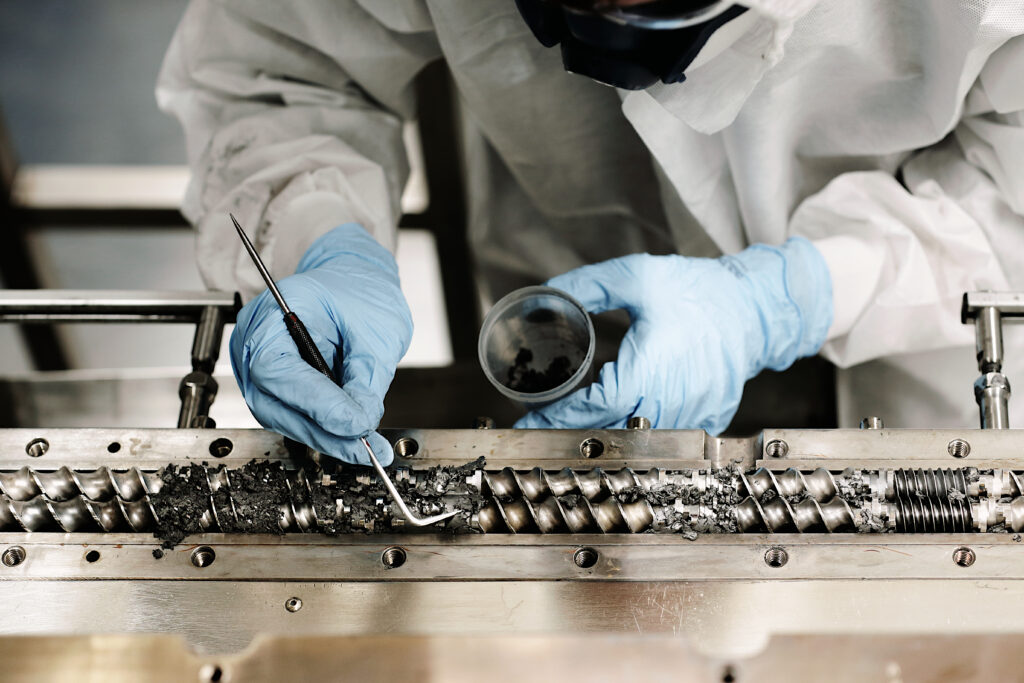Batteries
Optimise the full life cycle – from cradle to grave!
Batteries are a key component of future net-zero mobility. Minimising the carbon footprint of batteries — from production to recycling — is the task that a team from Swiss academic and industrial partners has set itself. Researchers from Empa and Bühler AG are developing a dry-coating technology to make electrode manufacturing more energy efficient.
Batteries? Really? I have them all over my house – in flashlights, calculators and most importantly my phone! Why are batteries an innovation topic at this year’s Energy Week? Well, as we already hinted in our discussion of energy storage and conversion, these technologies are going to significantly grow in importance as critical infrastructure of the future energy system, batteries included. Batteries of all types and sizes are going to be popping up in places you might not expect!
On the largest scale, batteries will increasingly be used to stabilize national grids, as we introduce more and more variable renewable energy sources such as solar and wind. To get the gist of what we mean by large, the world’s largest battery as of 2023 sits in California and can hold up to a staggering 3’000 MWh of energy! Compare that to the average 6.5 MWh consumed by an average Swiss per year. Yup, we’re talking real big batteries.
In total, countries worldwide have already installed close to 28 GW of grid scale battery storage as of the end of 2022. To reach net zero, the IEA predicts we will need roughly 970 GW of capacity by 2030. Given this large leap, you might ask why we don’t invest further into pumped hydro storage (global installed capacity of 160 GW in 2021), especially in a mountainous country like Switzerland.
The answer is that it’s a question of time scales. While pumped hydro is great for balancing out weekly or to some extend also seasonal energy differences between summer and winter, batteries are especially useful for the hour-to-hour variability of solar and wind electricity generation. (And if you’re curious about even shorter time scales, go check out Prof. Lukatskaya group’s work on supercapacitors!)
But wait, batteries contain loads of metals and minerals, don’t they? Where is all the material going to come from? Indeed, this is an important question, in particular in the face of geopolitical tensions such as the Ukraine war. Hence, researchers at Empa as well as companies such as KYBURZ are hard at work to recycle as much as possible – they have already achieved a recovery rate of over 90% for lithium-ion batteries! The Energy Technology and Policy group at ETH is also contributing to these efforts by developing policy frameworks for sustainable battery production.
And if you still haven’t had enough of batteries, go check out the Lab for Multifunctional Materials – they are even making bendable, degradable and transparent ones!


